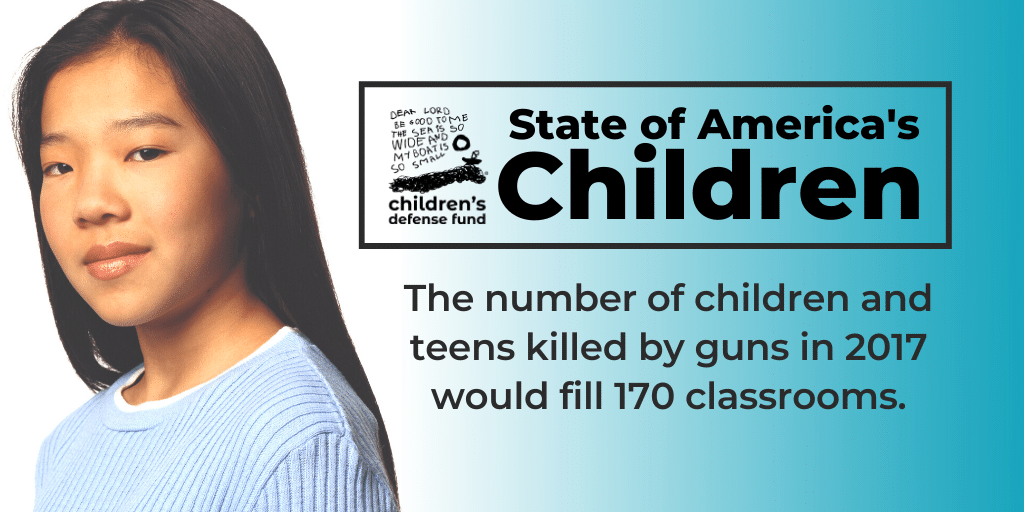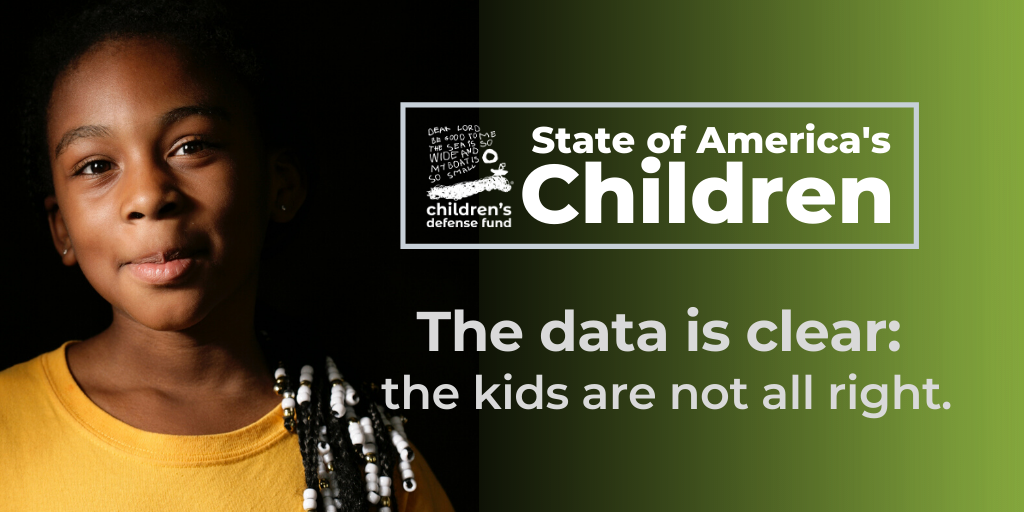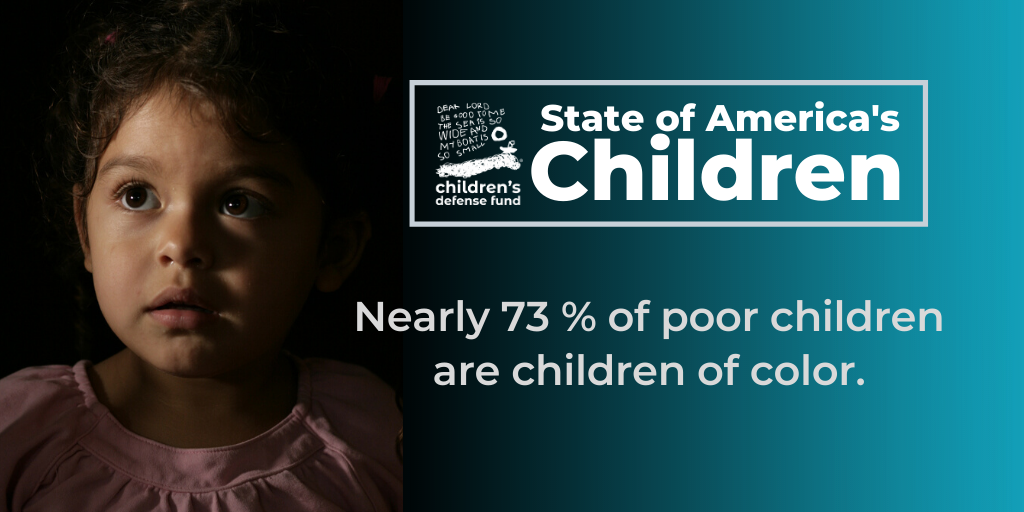
‘The shameful state of our children is not an inevitability – it is a choice.’
Every two seconds in America, a public school student is suspended. Every nine seconds, a high school student drops out. Every 43 seconds, a young person is arrested and every 47 seconds, a child is abused or neglected. A child or teenager is killed with a gun every two hours and 34 minutes; suicide claims the life of a young person every five hours.

These are but a few of the sobering statistics included in The State of America’s Children 2020, recently published by the Children’s Defense Fund. The annual report summarizes the status of America’s children in 11 areas: child population, child poverty, income and wealth inequality, housing and homelessness, child hunger and nutrition, child health, early childhood, education, child welfare, youth justice, and gun violence. For each area, CDF compiled the most recent available national and state-level data.
You can download the report here; in addition, CDF published accompanying state-by-state fact sheets for all 50 states plus Washington, D.C. The fact sheets can be accessed here.
The report found tremendous – and, in many cases, increasing – disparities between how minority children fare compared with white children. The timing of these findings could not be more important – sometime during the current year of 2020, children of color will become the majority of children in America.

“We know that to succeed, children need stable homes, quality health care, ample nutritious food, good schools, safe neighborhoods, and access to resources and opportunities that enable them to reach their potential,” CDF’s introduction states. “This report makes it clear that for too many of our children, especially children of color, these basic building blocks are out of reach.”
“And yet,” the report continues, “in the wealthiest nation on Earth, the proportion of federal dollars invested in children has fallen, to its lowest level in a decade. The shameful state of our children is not an inevitability – it is a choice. We don’t lack the resources to make sure every child has a chance to succeed. We just choose to invest them elsewhere.”
Among the report’s more shocking findings:
- Nearly one in six children – more than 11.9 million – were poor in 2018. Nearly 73 percent of poor children were children of color. Nearly one in three African American and American Indian/Alaska Native children and about one in four Hispanic children were poor compared with one in 11 white children.
- In 2017, 3,410 children and teens were killed with guns in the U.S. – the greatest number since 1998. Gun violence remains the second-leading cause of death for children and teens aged 1-19 and the leading cause for African American children and teens. African American children and teens were four times more likely to be killed or injured with a gun than their white peers.
- Children comprised one in five of the nearly 553,000 homeless people living in shelters, transitional housing, and on the streets on a single night in January 2018. Nearly 1.4 million homeless children were enrolled in public schools during the 2016-2017 school year – nearly double the number at the start of the Great Recession.
- 2017 and 2018 marked the first increases in the number of uninsured children in the U.S. in a decade. An estimated 4.3 million children under 19 were uninsured in 2018 – 425,000 more than the previous year. And nearly 37 million children under 19 received comprehensive, pediatric-appropriate and affordable health coverage through Medicaid and CHIP in 2018, but child enrollment in these programs decreased by more than 828,000 between 2017 and 2018.

Interspersed throughout the report are real-life stories of how children and families are affected, often adversely, by our nation’s neglectful policies – stories like that of Sarah Davis and her two daughters and how their lives have been uprooted by a lack of affordable housing:
“More than a decade after she and her two daughters were displaced by Hurricane Katrina, Sarah Davis returned to New Orleans. Sarah found a job answering phones for a hotel chain, but she didn’t make enough to cover a security deposit to rent a home. She and her teenage daughters were homeless, only able to rent a small house after a local charity chipped in to cover the initial costs. The family now has a home, but half of Sarah’s wages still go toward housing. To make the rent every month, Sarah and her daughters have to make sacrifices: no vacations, no trips to the movies, no new school uniforms. ‘I have a lot of guilt because I can’t provide for them the way that I want to,’ Sarah said.”
Is there any hope or cause for optimism? Maybe a smidgen. At a recent presidential debate, held Feb. 8 in New Hampshire, a question was asked about childhood poverty, prompted by a campaign by the Children’s Defense Fund to get the question asked.
It was the first time that had happened in more than 20 years.

